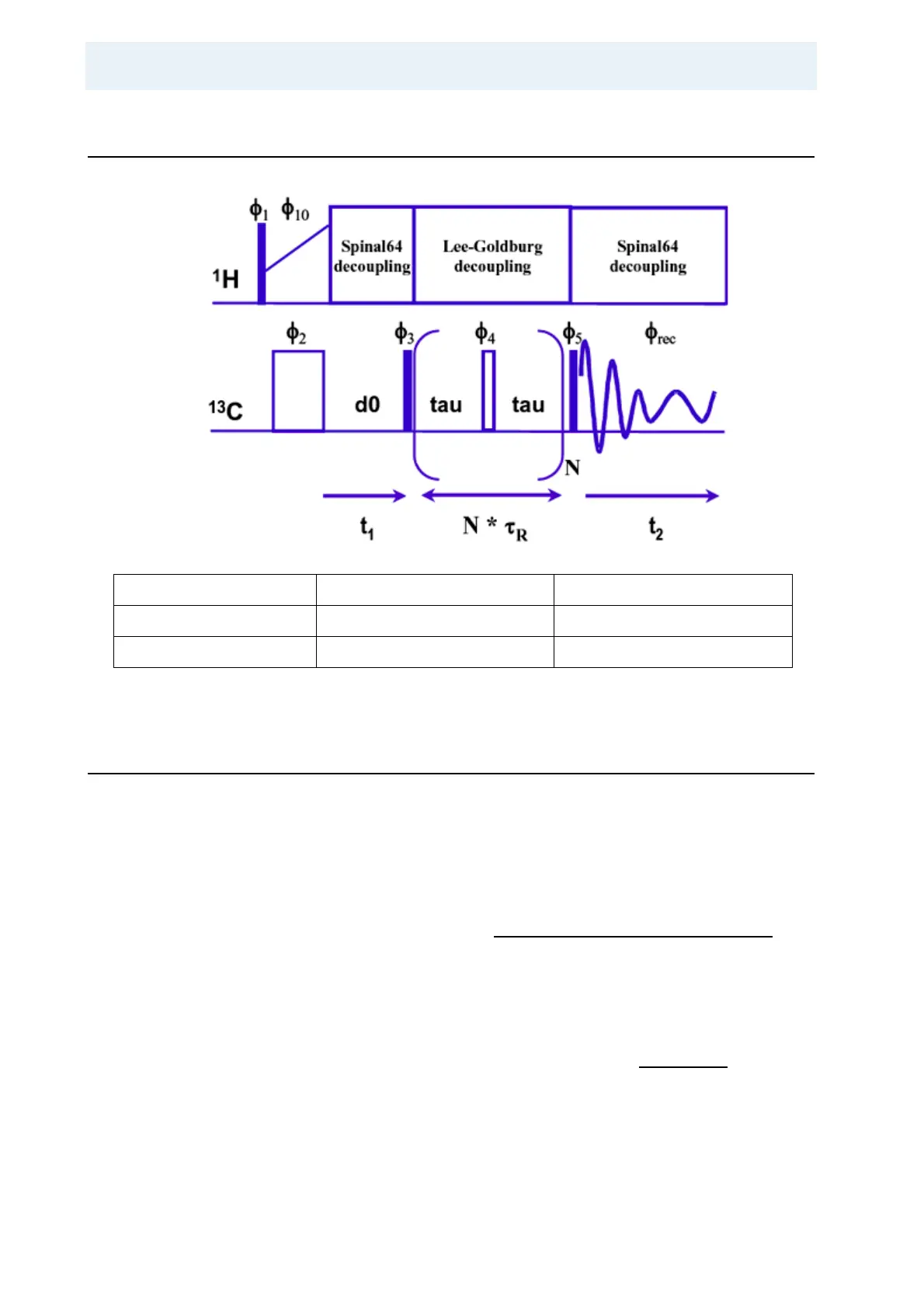138 (327) BRUKER BIOSPIN User Manual Version 002
RFDR
Experiment 10.1
Figure 10.1. RFDR Pulse Sequence for 2D CPMAS Exchange Experiment
Set-up 10.2
Sample:
13
C fully labelled histidine.
Experiment time: Less than 1 hour.
Experiment Setup
First setup the
1
H-
13
C cross polarization and the Hartmann-Hahn match accord-
ing to the procedures described in "Basic Setup Procedures" on page 55.
An important experimental consideration of the RFDR experiment is that the r.f.
field strengths used in the recoupling channel (pl11) and the r.f. field on the
1
H de-
coupling channel must be sufficiently different, ca. a factor of 3, to avoid rapid de
polarization of the carbon signal during the mixing time. This is usually not achiev
-
able, so it should be set as high as possible, using a LG-offset.
During the mixing period (cpds3=cwlg), as shown in Figure 10.1., the Gullion
compensated echo sequence used for the mixing period is a XY-8 phase cycling
(f
4
=XYXY YXYX). Consequently, the number of rotor periods for the mixing time
(L1) must be a multiple of 8.
φ
1
= 1 φ
4
= 0101 1010
φ
2
= 1 φ
5
=
0303 0303, 1010 1010
φ
3
= 0123 0321 φ
10
= 0 φ
rec
= 0220 0220, 1331 1331
